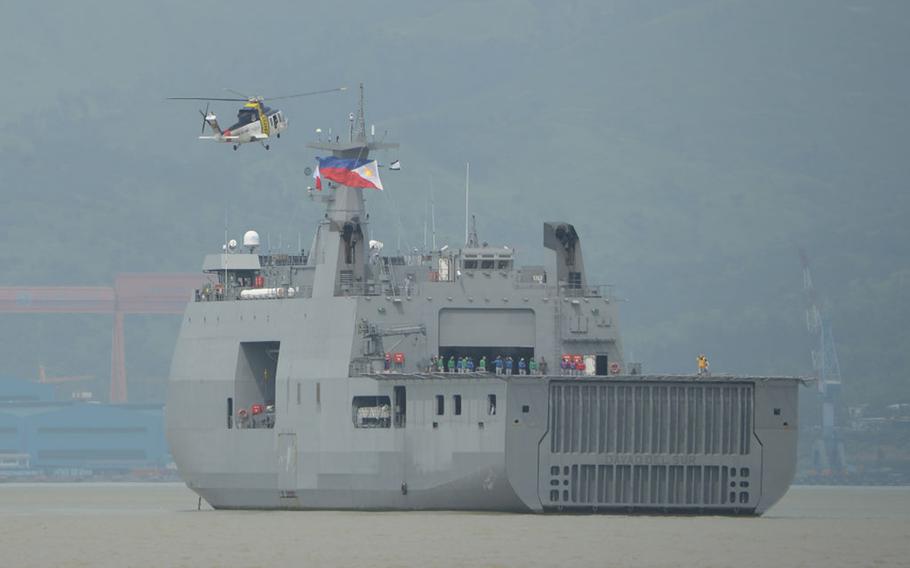
A helicopter prepares to land on the Philippine navy's strategic sealift vessel BRP Davao del Sur during an amphibious landing exercise at the lighthouse beach facing south China sea in Subic Freeport in Subic town, north of Manila on September 21, 2019, as part of a combined exercise between army, navy, air force and marines. (TED ALJIBE/AFP/TNS)
(Tribune News Service) — U.S. and Philippine troops will sail beyond the Southeast Asian nation’s territorial waters for the first time since the joint annual drills started three decades ago, risking further maritime tensions with Beijing.
The joint exercises will be held in multiple Philippine locations near the disputed South China Sea and Taiwan despite China’s warning that “tensions could get worse” with the activities set to run from April 22 to May 10.
Over 16,700 personnel are expected to take part in the training called “Balikatan,” a Filipino word that means “shoulder to shoulder.” Australian and French troops will also take part in some of the exercises.
For the first time since Balikatan started in 1991, the allies will sail outside the 12 nautical miles of the Philippines’ baseline off the western Palawan province, which faces the South China Sea. The US military’s maiden deployment in the Philippines of a missile system covering a range that could reach China’s southern provinces shows “the drills are beyond self-defense purposes,” according to Cao Weidong, a retired senior researcher at the PLA Naval Research Academy.
This year’s war games are taking place at a time of increasingly strained relations between China and the Philippines as President Ferdinand Marcos Jr. grew more assertive over territorial rights and bolstered ties with the U.S. and its allies. Maritime encounters between the countries have become more frequent, with China’s recurring use of water cannons damaging Philippine vessels and at times injuring the crew.
The use of the missile system, according to Philippine military Colonel Michael Logico would only be for logistical training and it will not be fired, emphasizing that the drills aren’t aimed against China.
“The intention of targeting China’s mainland is very clear,” Cao said. “We can also deploy corresponding weaponry and alert equipment so that we can respond,” he said without elaborating.
U.S. and Philippine troops will also simulate the sinking of an “enemy ship” and retaking three Philippine islands, seeking to enhance the interoperability of their militaries.
Balikatan will involve “tracking of simulated air threats and targeting them with multiple air and missile defense systems” as well as “integrating multilateral air and land platforms to increase awareness of the maritime security situation,” the US embassy said in a statement last week.
This year’s exercises will also feature cyber defense and information warfare after the Philippines grappled with recent hacking incidents.
Chinese Foreign Ministry spokesperson Lin Jian last week warned that “the region will only become less stable” when countries outside are brought into the South China Sea “to flex muscles and stoke confrontation.”
©2024 Bloomberg L.P.
Visit bloomberg.com.
Distributed by Tribune Content Agency, LLC.